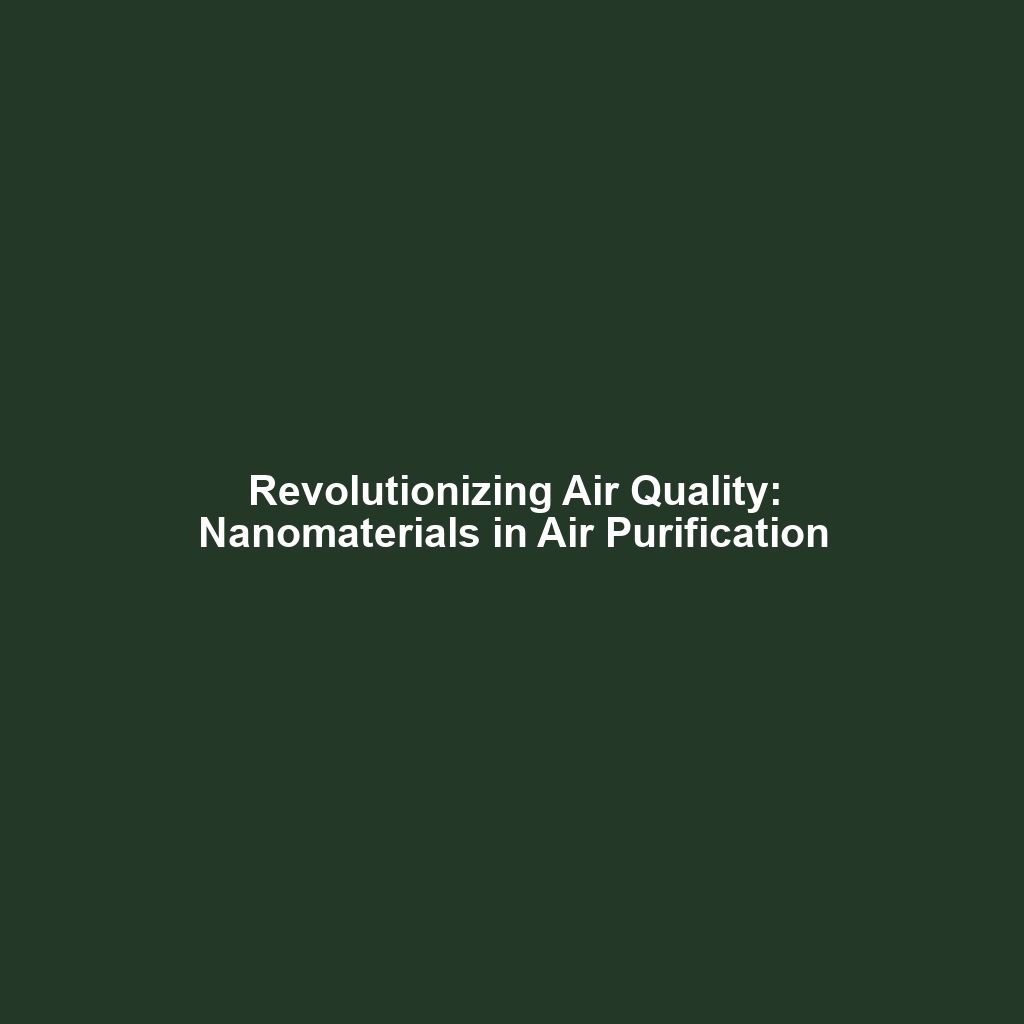Air Quality Improvement: Nanomaterials in Air Purification
Introduction
As urbanization and industrialization continue to rise, improving air quality has become a global imperative. Advanced nanomaterials, with their unique properties and capabilities, offer innovative solutions in air purification. This article discusses the significance of nanomaterials in air purification and their role in enhancing air quality improvement, emphasizing the need for advanced materials to tackle today’s environmental challenges effectively.
Key Concepts
Understanding the intersection of advanced nanomaterials and air purification is essential for grasping their potential impact. Key concepts include:
1. Nanomaterials and Their Properties
Nanomaterials are substances that have structural components at the nanoscale, typically between 1 and 100 nanometers. They exhibit unique physical and chemical properties, such as increased surface area, enhanced reactivity, and exceptional strength. These properties make them especially effective in removing pollutants from the air.
2. Mechanisms of Air Purification
The mechanisms through which nanomaterials improve air quality include:
- Adsorption: Nanomaterials can attract and bind airborne contaminants.
- Catalysis: They can facilitate chemical reactions that neutralize pollutants.
- Filtration: Advanced nanofilters can physically remove particles from the air.
Applications and Real-World Uses
The applications of nanomaterials in air purification are vast and transformative. Here are some significant uses:
- Indoor Air Quality Improvement: Air purifiers utilizing nanomaterials can effectively remove allergens, VOCs, and other pollutants from enclosed spaces.
- Industrial Emission Control: Nanomaterials are used in systems designed to filter and cleanse emissions from manufacturing processes.
- Smart Sensors: Advanced nanomaterials are integrated into sensors that detect and analyze air quality, providing real-time data and feedback.
Current Challenges
Despite their promise, several challenges hamper the widespread adoption of air quality improvement technologies involving nanomaterials:
- Long-term stability and durability of nanomaterials.
- Potential environmental and health impacts of nanoparticles.
- High costs of production and implementation.
- Regulatory challenges surrounding the use of nanotechnology.
Future Research and Innovations
The future of nanomaterials in air purification looks promising, with several innovations on the horizon:
- Next-Generation Nanofilters: Development of new materials that enhance filtration efficiency while being cost-effective.
- Smart Nanomaterial Coatings: Coatings that react to air quality changes, dynamically altering their filtering capacity.
- Biocompatible Nanomaterials: Research into materials that minimize environmental and health risks while maximizing purification capabilities.
Conclusion
The integration of advanced nanomaterials in air purification represents a powerful tool for air quality improvement. Ongoing research and innovations are crucial to surmount the existing challenges and unlock their full potential. To learn more about advanced nanomaterials and their applications, visit our related articles on Nanotechnology in Environmental Solutions or The Future of Air Purification Technologies.

Leave a Reply